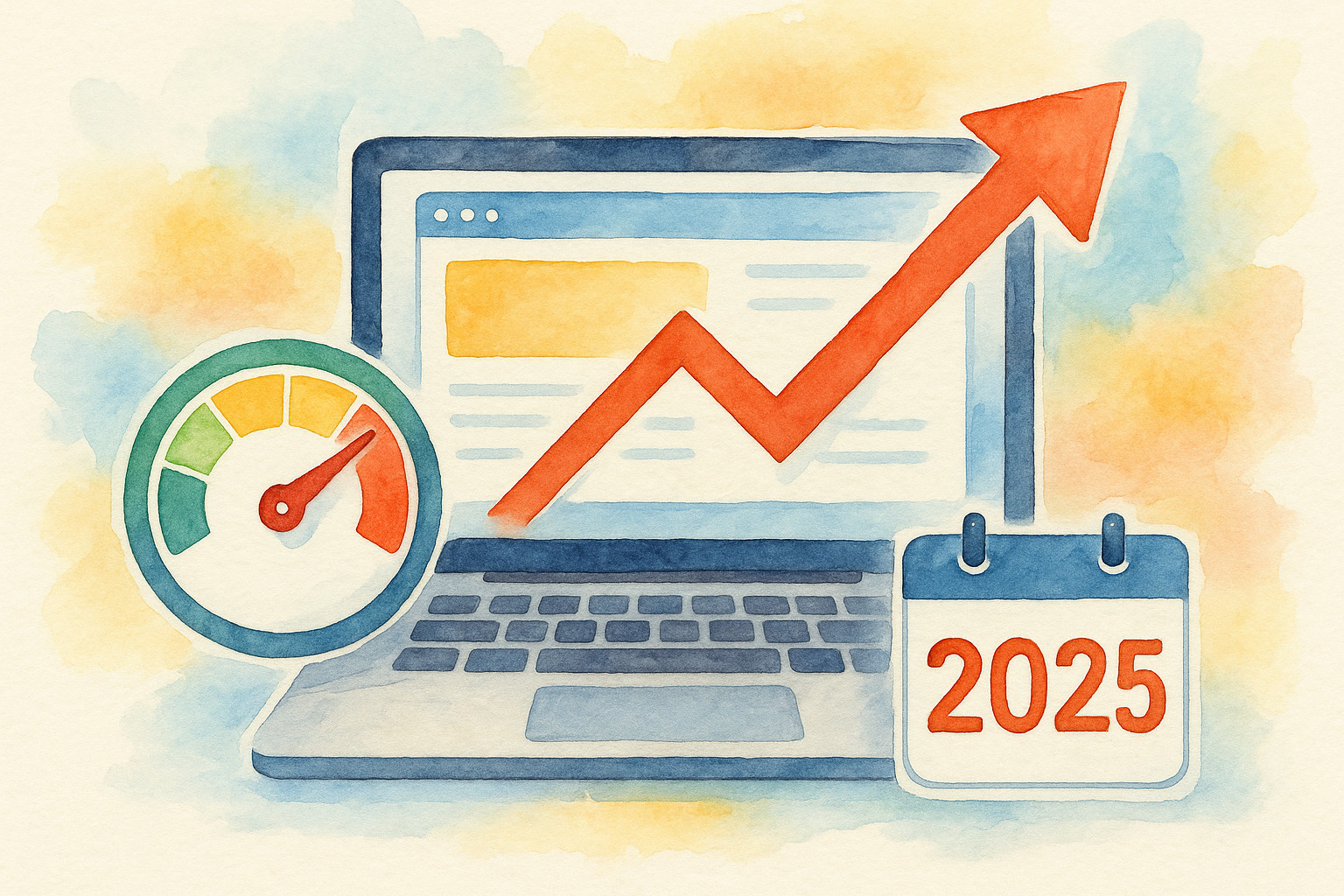Imagine clicking on a website and waiting… and waiting. Chances are, you won’t stick around for long—and neither will your customers. In today’s fast-paced digital world, every second counts, especially for small businesses competing for attention online. That’s why mastering website speed optimization is more important than ever in 2025.
Website Speed Optimization for Small Businesses: 2025 Action Plan
Understanding the Importance of Website Speed
Website speed is no longer just a technical detail—it’s a make-or-break factor for small businesses. When your site loads quickly, it not only improves the user experience but also directly impacts your bottom line. 47% of consumers expect a website to load in 2 seconds or less. That means nearly half your visitors are ready to bounce if your site lags even slightly.
But it isn’t just about impatience; slow sites can actually hurt your sales. A one-second delay in page load time can lead to a 7% drop in conversions. Imagine losing 7% of potential sales just because your images are too big or your server is underpowered. Over time, this adds up to serious revenue loss. In fact, Slow-loading websites cost retailers $2.6 billion in lost sales annually.
The stakes are even higher for mobile users. 53% of mobile users leave a site if it takes more than 3 seconds to load. With more and more people browsing and shopping on their phones, optimizing for mobile speed is crucial. Plus, speed matters to search engines. Sites with faster load times rank higher on Google search results. So, if you want your business to be found, speed needs to be a priority.
Assessing Your Current Website Performance
Before you can improve your website’s speed, you need to know where you stand. Start by analyzing your site’s current performance using reliable tools and metrics. Look for load times, both on desktop and mobile, and identify any bottlenecks that could be slowing things down.
Some key indicators to check include:
- Time to First Byte (TTFB): How quickly your server responds to a request.
- Fully Loaded Time: The total time it takes for your site to load all elements.
- Largest Contentful Paint (LCP): When the main content becomes visible to users.
- First Input Delay (FID): How quickly your site responds to user interactions.
Run tests at different times of day and from multiple devices to get a complete picture. Don’t forget to benchmark your competition as well—if their sites are faster, you’re at a disadvantage.
Key Strategies for Speed Optimization
With your current performance data in hand, it’s time to roll up your sleeves. Here are proven strategies to accelerate your small business website and keep visitors engaged:
- Optimize Images: Images are often the biggest culprits when it comes to slow load times. Compress images without sacrificing quality, use modern formats like WebP, and make sure you’re serving appropriately sized images for different devices.
- Minimize HTTP Requests: Each file your site loads—scripts, stylesheets, images—requires a separate request. Reduce these by combining files where possible, eliminating unnecessary plugins, and using CSS sprites.
- Leverage Browser Caching: Caching allows returning visitors to load your site much faster by storing elements locally. Set proper cache expiration dates for static resources like images, CSS, and JavaScript files.
- Enable Compression: Use tools like Gzip or Brotli to compress your website’s files before they’re sent to the browser. This dramatically reduces file sizes and speeds up load times.
- Prioritize Critical Content: Ensure that the most important parts of your page load first. Use lazy loading for images and videos so they only load when users scroll to them.
- Streamline Code: Remove unnecessary code, comments, and whitespace from your HTML, CSS, and JavaScript. Minify your files to make them as lean as possible.
- Choose Fast, Reliable Hosting: Your web host plays a major role in site speed. Invest in a reputable provider with high uptime and quick server response times, especially if your traffic is growing.
- Use a Content Delivery Network (CDN): CDNs store copies of your site on servers around the world, delivering content from the location closest to your visitor for lightning-fast speeds.
These strategies aren’t just for tech wizards—they’re achievable for any small business looking to compete in today’s digital landscape. Regularly review and adjust your approach as your website evolves and your business grows.
Leveraging Tools and Technologies
Luckily, you don’t have to optimize your website speed alone. There’s a wealth of tools and technologies designed to help small businesses identify issues and implement fixes—often with just a few clicks.
Here are some essentials you should consider adding to your toolkit:
- Google PageSpeed Insights: Offers actionable suggestions to improve your site’s performance on both mobile and desktop.
- GTmetrix: Provides detailed breakdowns of what’s slowing your site down, complete with waterfall charts and historical data.
- WebPageTest: Lets you test your site from multiple locations and browsers, giving a real-world view of load times.
- Image Optimization Plugins: Tools like ShortPixel or Smush make it easy to compress and resize images automatically.
- Content Delivery Networks: Services like Cloudflare or StackPath can be integrated quickly and provide instant speed boosts.
Don’t forget about automation—many website builders and content management systems (like WordPress) offer built-in optimization features and plugins. Just be sure to research compatibility and reviews before installing new tools. The right mix of technologies can make speed optimization manageable, even with a small team.
Monitoring and Maintaining Optimal Speed
Speed optimization isn’t a one-and-done job. As you update your site, add new features, or see traffic spikes, performance can fluctuate. That’s why ongoing monitoring is essential to maintain those lightning-fast load times.
Set up regular speed audits using the tools mentioned earlier. Watch for sudden increases in load time and investigate the causes—often it’s a new plugin, a large image, or even a traffic surge. Make it a habit to review site speed at least once a month, and always before and after major updates.
Additionally, educate your team about the impact of speed on user experience and sales. When everyone’s on board, it’s easier to keep performance top-of-mind as your business evolves. If you ever need inspiration or expert advice, check out resources at https://brenham.buzz for tips tailored to small businesses.
Conclusion: The Competitive Edge of Speed
In 2025, speed isn’t just a luxury for big brands—it’s a necessity for every small business with an online presence. Fast-loading websites attract more visitors, keep users engaged, and drive more conversions. Remember, Sites with faster load times rank higher on Google search results. By investing in website speed optimization, you’re setting your business up for success in a competitive digital landscape. Make speed a priority, and watch your online results soar.


Leave a Reply